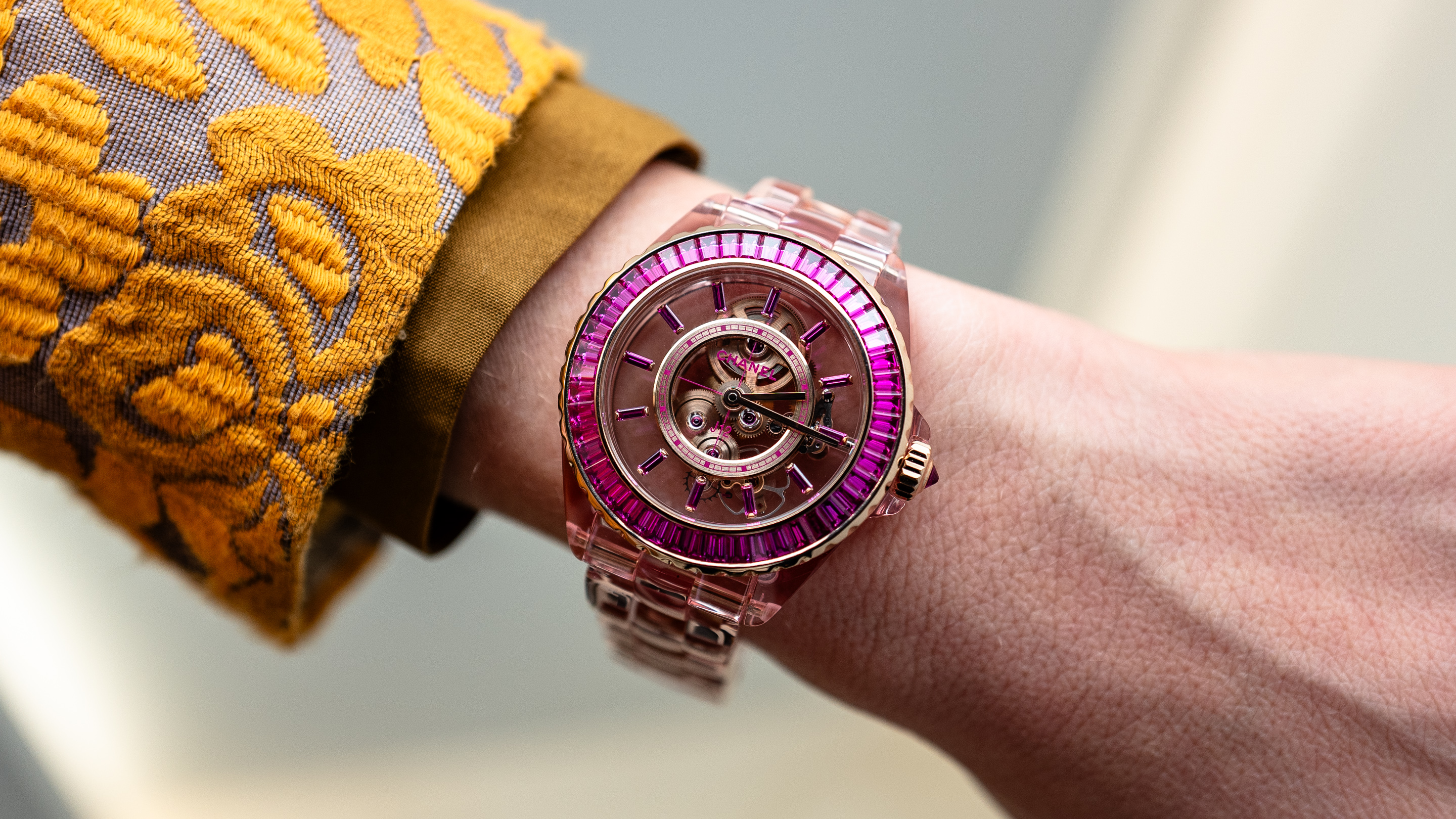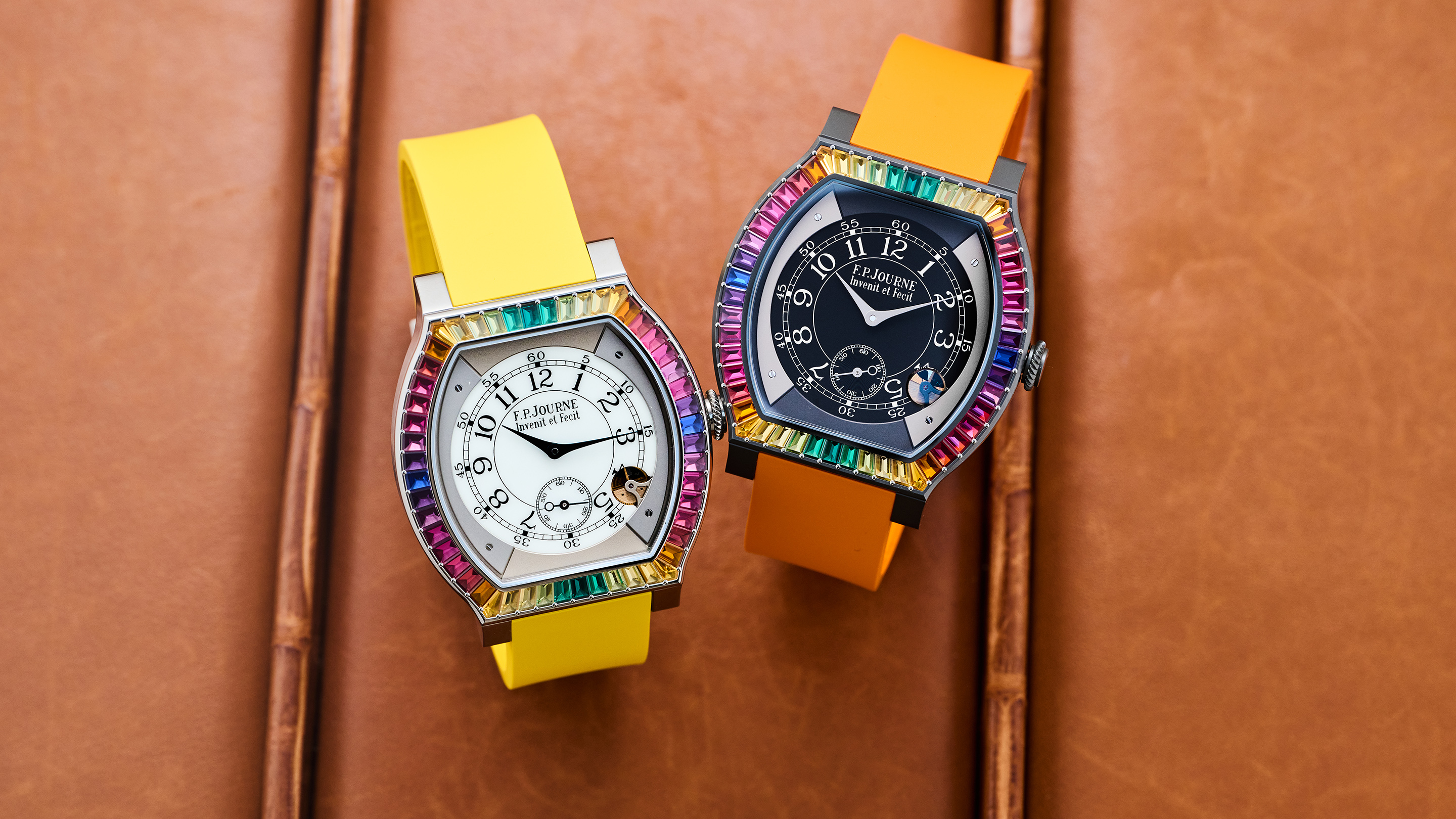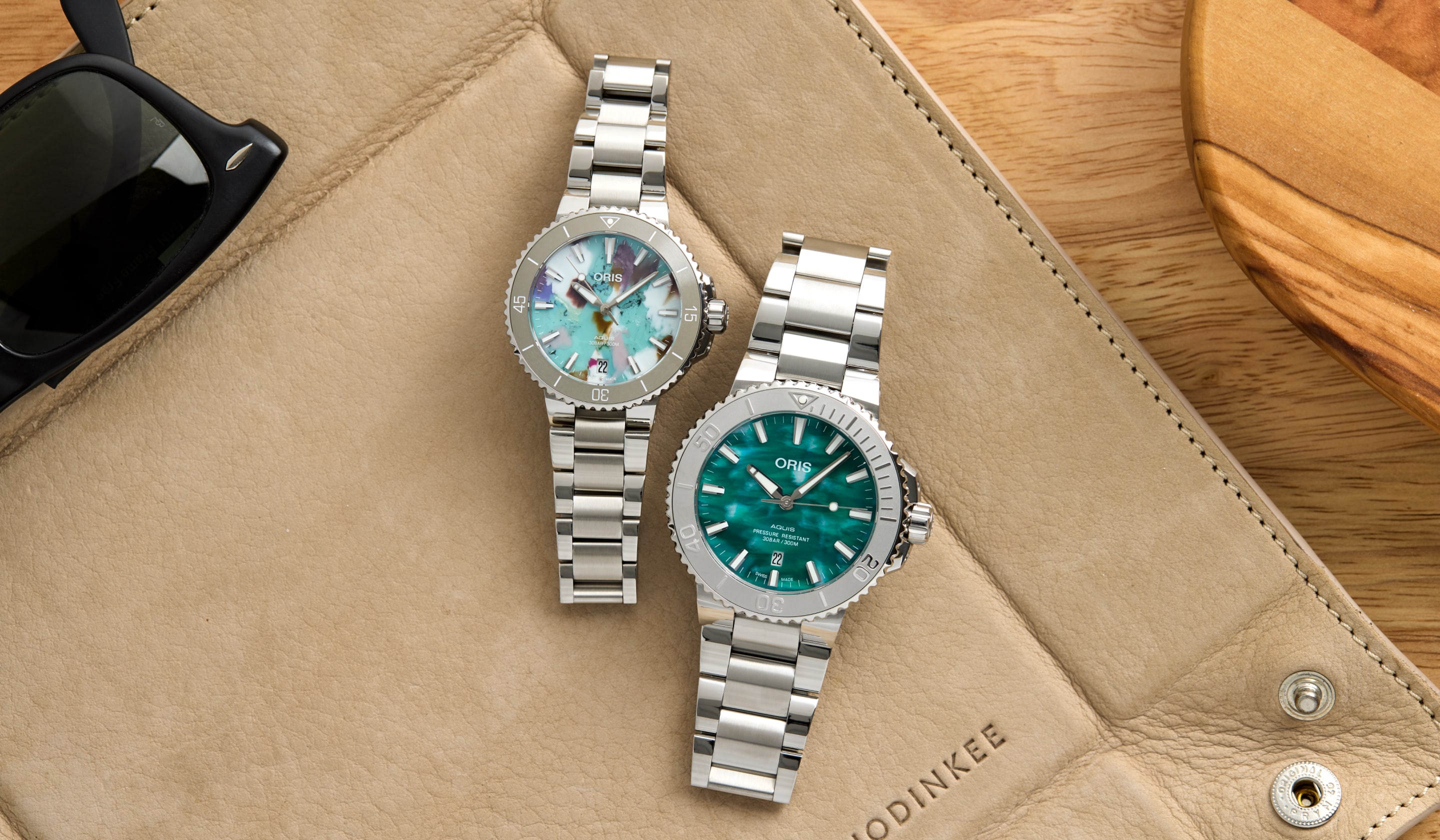ADVERTISEMENT

Say hello to the winner of the Grand Prix d'Horlogerie de Genève 2016, in the Sports Watch category. That's right: this is the jury's pick of the litter, and it's not like competition wasn't strong; other contenders included the Tudor Heritage Black Bay Dark, the Ressence 5B and the Heuer Monza. We thought, therefore, that we'd judge the merits of this diver first hand, and see what could explain such a significant recognition for a brand primarily known historically for its vintage chronographs and split-seconds chronographs. Without spoiling too much, let's say that it was a very convincing test-drive – with the exception of the most frustrating clasp ever encountered.
The lines of the "new" Scafograf 300 are inspired by the original 1960s diving watch, although the lyre lugs of the original are gone.
While Eberhard is more famous for its focus on chronographs (especially the oversized "Ultra Fort," meaning "very strong" in English), one should not forget their other well respected tool watches. Eberhard had not only released an antimagnetic wristwatch called the Scientigraf in order to compete with the Rolex Milgauss, the Omega Railmaster and the IWC Ingenieur, but also had a full range of dive watches, called the Scafograf. The very first one was launched in the late 1950s with a water resistance of 100 meters (hence the Scafograf 100 name). In 1959, the Scafograf 200 followed, introducing a rotating bezel that increased the case size from 35mm to 42.5mm (and you can probably guess the depth rating). Shortly after, in 1964, the Scafograf 300 followed, and the family expanded until the mid-1980s when the company released the quartz-powered Scafograf 1000, a diving monster identical to the Breitling SuperOcean Deep Sea.
The dial is well balanced, legible and sober, as is the black bezel.
A few months ago, at Baselworld 2016, Eberhard introduced a new interpretation of the Scafograf 300, which retained some of the design elements of the original version (though notably, the original lyre lugs disappeared) but with the addition of a helium escape valve at 9 o'clock. The case dimensions remained fairly similar, with a 43mm diameter and a 12.6mm thickness. The new Scafograf 300 comes in three different configurations.
ADVERTISEMENT
To paraphrase Henry Ford on body paint options for the Ford Model T, you can have your choice of any color for the dial and bezel as long as it's black. The second hand, however, can be in steel, or colored either yellow or blue. Additionally, each of these watches comes on a rubber strap, or on a stainless steel bracelet (more on this subject in a minute). As would be expected for a diver's watch, the weight is not negligible, ranging from 116 grams on the rubber strap to 190 grams on the bracelet (in comparison with the 201 grams of the 44mm Grand Seiko SBGA029, or the 173 grams of the 40mm Rolex Sea-Dweller 4000).
The caseback clearly lists the characteristics of the Scafograf 300.
Eberhard already offered diving watches within the Scafo Collection, but undoubtedly the design of the Scafograf 300 is more wide in appeal than that of the Scafodat 500, which has an absolutely huge second crown at 4:00, along with a locking button, for operating the inner rotating bezel. The finishing of the Scafograf 300 matches its classical appearance; it looks and feels like a serious dive watch. Playing with the unidirectional bezel leaves the very same solid impression; the clicks are clean and pronounced, there is none of the looseness that can ruin the experience (or your life if you actually refer to the bezel during a dive, and it has slipped from the correct position).
Additionally, making the bezel insert in ceramic was a really relevant move (a ceramic bezel is well on its way to becoming the default for dive watches) since this material offers a much better resistance to scratches than the anodized aluminium more often used for this purpose, as well as avoiding the risk of galvanic corrosion in seawater where aluminum contacts steel. The writing on the case back is sober, describing the watch in a straightforward way. The automatic movement is a workhorse ETA 2824-2, with a date display and hacking mechanism. The helium valve on the left case band is reassuring but mostly there for the show, as it is on the Rolex Sea-Dweller, given that only a minuscule percentage of its owners if any, will actually ever need it (it's there as a safety feature to prevent possible damage to the watch during the decompression stage of saturation diving).
"Déclic" could be translated as "Eureka!" although it's not exactly a genius invention.
Handling and living with the Scafograf 300 was wonderful, up until I became obsessed with their "Déclic" system for locking and unlocking the bracelet. And I mean obsessed in a bad way – to me, it's an example of technical overkill that should never have made it to production. I fully understand the need to differentiate the bracelet from other dive watch clasps (especially the Oyster) yet this redesign was completely unnecessary, if not actively troublesome. The "magic lever" maybe made sense in theory, but it was actually not so great practically; for one thing, it leaves an imprint of the inner mechanism on your skin (because it lies on the inside of the clasp), and for another, there were times when the locking lever would bump something and gently go into the open position. Additionally, such lever makes it impossible to include a wetsuit extension system, one of the key elements for a bracelet aimed at diving. For that reason, I would highly recommend using the (excellent) rubber strap with signed pin buckle, which is actually much more comfortable on the wrist.
A sober look for a serious diving watch.
The Scafograf 300 retails for $4,070 on a bracelet, and $3,260 on the black rubber strap. This puts this Eberhard at a significantly higher price point than the Longines Legend Diver and the Oris Sixty-Five, each priced around $2,000. Yet, its superior water resistance and the addition of technical features like the helium release valve, and ceramic bezel, makes a comparison with the $4,400 Tudor Pelagos fairer, and Tudor actually used to use the very same movement (the new versions now rely on an in-house movement).
More information on the Scafograf 300 can be found on the Eberhard & Co website.






































